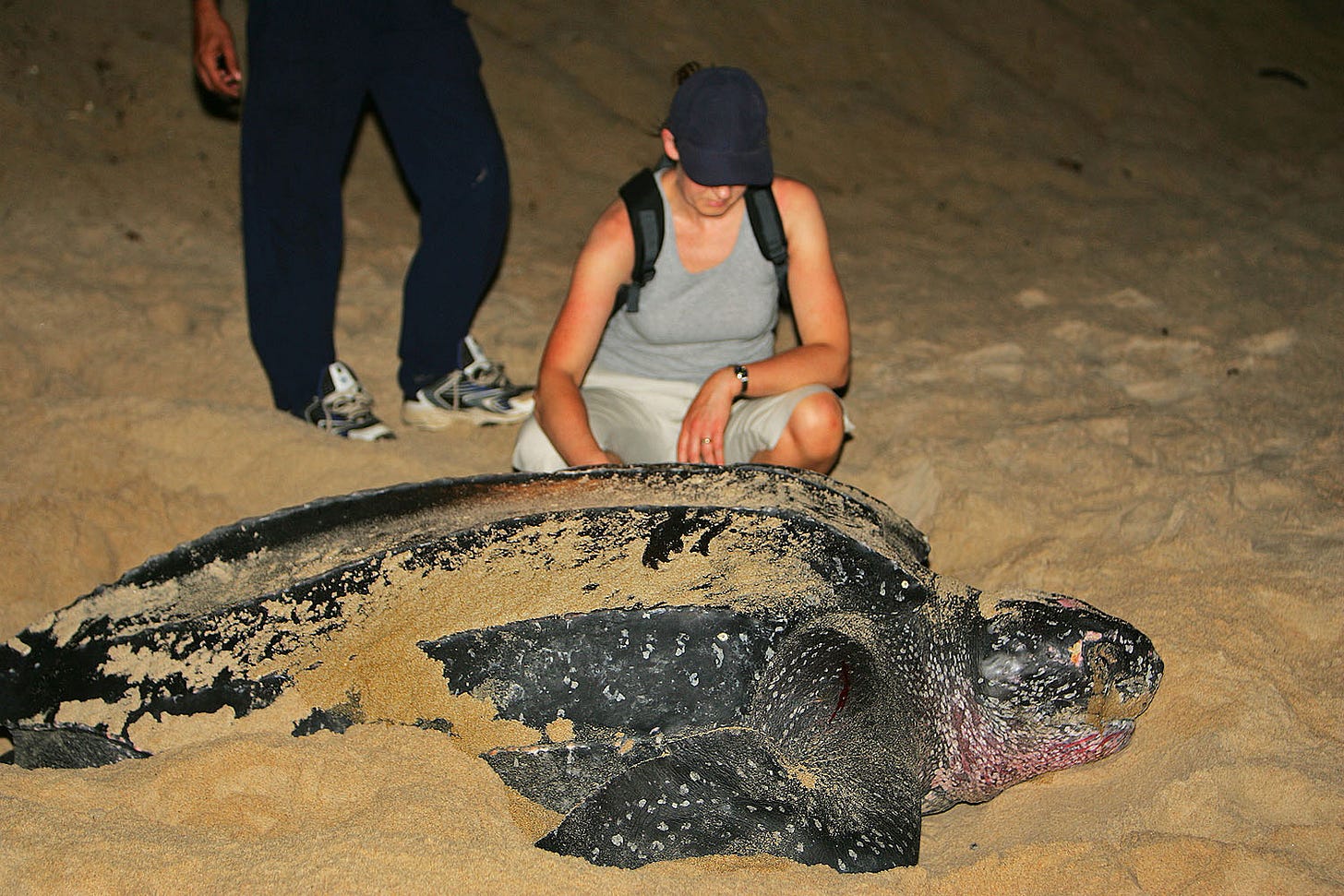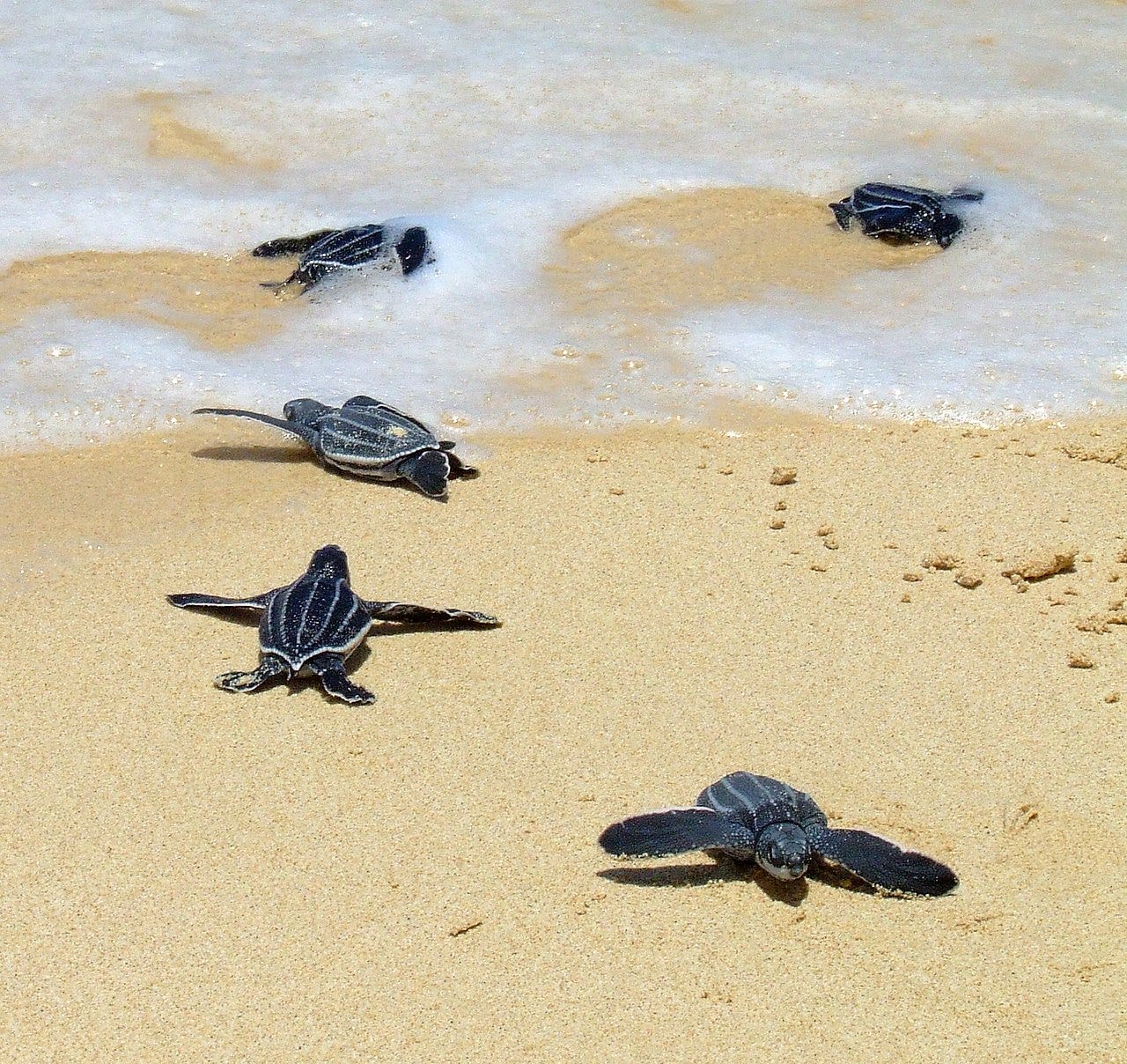The World's Largest Turtle Lays Eggs That Aren't Eggs
Leatherback turtles weigh more than a moose and are full of secrets.
Hi, I’m Jason Bittel. I’m writing a book about animals for National Geographic, and this week I am obsessed with leatherback turtles.
You may already think you know about leatherbacks. You know they live in the ocean. You know that they are ginormous. Maybe you even know that they have a shell that is covered in skin rather than hard plates. In which case, bully for you!

But what I’ll bet you don’t realize is that leatherbacks can weigh as much as a rhino. Or that at a maximum length of around 10 feet, some leatherbacks are longer than your average Christmas tree is tall.
Now, you might also think that as the world’s largest turtle, scientists would already know pretty much everything there is to know about these animals. But in fact, the species is cloaked in intrigue.
For instance, we know a good bit about leatherbacks as eggs, and also as sand-crawling babies. And we know a fair amount about leatherbacks as adults. But the 15 to 20 years in between, while the pipsqueaks are out in the world slurping up jellyfish and edging toward maturity? We know bupkis.
In fact, according to The Leatherback Turtle (by James R. Spotila and Pilar Santidrian Tomillo, Johns Hopkins University Press), “subadult or posthatchling specimens are so rare that few have ever seen them.”
This means the world’s largest turtle is also the world’s largest black box.
When Are Leatherback Eggs Not Actually Eggs?
Okay, but of all the mysteries surrounding leatherbacks, there’s one I just can’t get out of my brain. Because it is just. too. weird.
When a leatherback female lays her eggs on the beach, it’s kind of a big deal. For starters, the eggs are the largest known in turtles, and each one is nearly the size of a tennis ball. They’re coated in shimmering goo, and each one holds the promise of an entire species nestled inside.
Afterall, the International Union for Conservation of Nature classifies leatherbacks as vulnerable to extinction.
For all of these reasons, turtle scientists love to get in close and observe the species as it lays its eggs so they can try to find clues about how to better protect the giant reptiles.
“You are lying behind it, and usually you’re getting stung by sand fleas all over you, and you’re counting the eggs as they drop into the sands,” says Aliki Panagopoulou, an environmental scientist with The Leatherback Trust. “It never gets old.”
But then, as the turtle nears the end of its clutch, it stops squirting out tennis balls and switches to “eggs” that are more similar in size to ping-pong balls. Scientists used to call these yolkless eggs, but they later realized the tiny balls contained neither embryo nor yolk. So now they refer to them as shelled albumin gobs, or SAGs.
Are you ready for the best part?
Every! Single! Leatherback! Nest! Contains! SAGs!
And yet…
We! Do! Not! Know! What! They! Are! For!
I mean, they certainly don’t produce baby turtles. They are blanks, through and through. And there are dozens of them in every clutch! In fact, one study recorded that the gobs made up one-third of the number of eggs in the clutch. And other turtle species almost never create them. All of this is super weird!
Scientists’ best guess? Because they tend to be deposited during the second half of egg-laying, it may be that the SAGs create a buffer that keeps sand from collapsing and filling in too tightly around the viable eggs. Some sand is fine—we know this because the mother turtle covers her eggs back up before retreating to the sea—but too much may inhibit the eggs’ access to oxygen.
“It could very well be, but we can only speculate,” says Panagopoulou.
And remember, other turtles who bury their eggs in the sand do not create SAGs.
According to Spotila and Tomillo, “Despite numerous attempts to discern the role of SAGS by observation and experiments in the field, their mystery continues.”
You think we’ve been everywhere and seen everything. We’ve sent probes out into the cosmos and unraveled the genetic twine that holds us all together, and yet, these megabeasts roll up to the shore and drop dozens of enigma grenades right before our very eyes and so far, all we can do is shrug while the waves crash and the sand flies feast.
You gotta love it.






